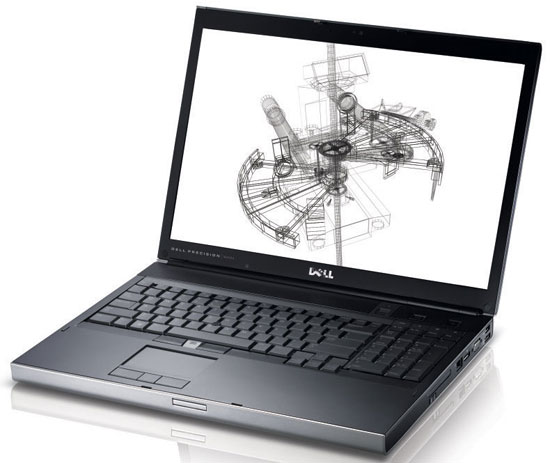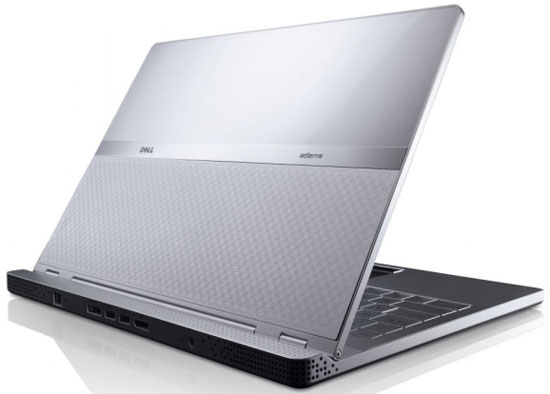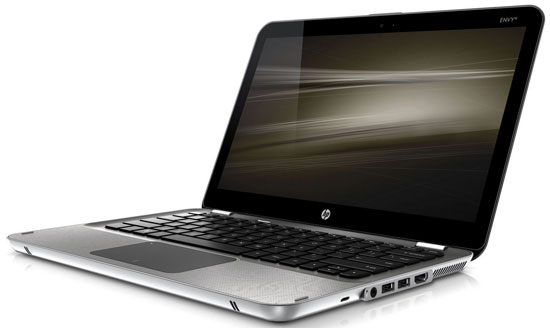Mobile Buyers' Guide, December 2009
by Jarred Walton on December 6, 2009 12:00 AM EST- Posted in
- Guides
Mobile Workstations
If you're looking for a truly powerful mobile workstation, there's really nothing else that can match the CPU power offered in the Clevo D900F. It will accept the fastest desktop Core i7 Bloomfield processors, giving you up to 3.33GHz of steady number crunching prowess. The D900F is a beast, weighing nearly 15 pounds and delivering an hour of battery life, but as a transportable workstation it will outperform any mobile CPU by a significant margin. Companies like Eurocom even support up to 24GB of memory if you need lots of RAM for a mobile server.

If you're looking for something less bulky, Dell's Precision M6400 is very nice and even has (or at least had?) a matte LCD option. The M6500 is the new Core i7 version of the M6400, with a higher base price. Both models have four SO-DIMM slots and support up to 16GB of RAM, or 8GB via four SO-DIMMs without breaking the bank. These notebooks are truly intended for workstation use, though, as they come with either NVIDIA Quadro or ATI FirePro GPUs, and they have a 3-year warranty standard.
Designer Laptops
If you're more interested in aesthetics than performance, look at the HP Envy and Dell Adamo laptops. We've already mentioned the HP Envy 15 as a gaming option, so we'll confine our discussions here to the Envy 13. Also note that the base model Adamo actually comes in at $1500, but any upgrades will bump you into the "high-end" territory.

At their core, Adamo laptops (including the XPS) are essentially CULV designs, but with an emphasis on being thin. The standard Adamo laptops ship with Core 2 SU9400 CPUs (1.4GHz, 3MB L2, 800FSB) - it's marginally faster than the Pentium SU4300 found in significantly less expensive laptops. Adamo battery life is listed as 5+ hours with a 40Wh battery. The Adamo XPS is a more exotic design with a fold-down keyboard, and it comes with a 128GB SSD and a 4GB DDR3 SO-DIMM with a starting price of $1800. The newer Adamo is available in black (onyx) or white (pearl), and it's available in two basic configurations. The $1500 "Admire" model has the same SU9400 and a 128GB SSD, but it ships with 2GB DDR3. The $2300 "Desire" ups the ante significantly, with 4GB DDR3, a 256GB SSD, and a Core 2 SL9600 CPU (2.13 GHz, 6M L2, 1066FSB). The SL9600 is a 17W TDP vs. 10W TDP for the SU9400, so battery life may also be slightly lower in that configuration.

The HP Envy 13 is similar in many ways, but with a bit more in the way of customization options as well as some higher performance accessories; specifically, HP includes a discrete ATI HD 4330 GPU on all Envy 13 models - good for graphics performance, but bad for battery life, but thankfully it's disabled and you use the IGP by default when unplugged. You can get the Envy 13 with SL9400, SL9600, or SU9600 CPUs (the latter two add $100 each, with the SU9600 actually providing the lowest performance but best power characteristics). Envy comes with 1GB DDR3 soldered on the motherboard and either 2GB or 4GB in the SO-DIMM slot. For the hard drive, HP lets users choose between a standard 250GB 5400RPM HDD, or you can upgrade to a 160GB SSD. That means unlike the Adamo, you're actually getting what we consider to be the best current SSD. HP also gives you a choice between a 13.1" 1366x768 LCD panel, or a 1600x900 panel for $100 more. Last, we'd look at adding the extra capacity 6-cell battery (which you can only get by purchasing the standard 4-cell with the 6-cell).
All told, the Envy 13 with the upgrades listed above will price out to $2475 ($2350 without the extra battery), and in terms of specs it looks to be better than the Dell Adamo. Having used neither one in person, we can't say which has the better feel, but there are numerous complaints about the Envy 13 touchpad and we recommend caution before taking the plunge. Honestly, while both laptops look nice, we'd still recommend saving a bundle of money and dropping down to something a little less stylish and a lot more affordable - any of the CULV laptops we mentioned earlier should suffice.










49 Comments
View All Comments
Hrel - Monday, December 7, 2009 - link
I've said it before on here I'd be glad to buy the ASUS UL80Vt if it only had a screen with a resolution of at least 1600x900 (decent quality screen required. like 1000:1 contrast ratio) The Intel SU9600 CPU instead with the same percentage overclock and the Nvidia GT240 GPU. Finally I'd like that laptop to cost less than 1000 dollars and get at least 7 hours internet battery life. If removing the integrated GPU and having only the dedicated GPU is required to keep the price down I'd be totally fine with that.Or better yet, sell it with the integrated GPU, leave the slot and heatsink for the dedicated GPU and offer the dedicated GPU as an add on or after-market purchase on newegg.
geok1ng - Sunday, December 6, 2009 - link
I really don't get the idea behind the suggestion of the ASUS UL80Vt on the sub $850 range, when you can get the Dell Studio 14z: you get a better CPU, a better IGP ( and having Nvidia 210M as add on VGA isn't really a great improvement over the 9400M G)and a better battery for the same price range.The problem is that outside Mac Books you simply dont get state of art notebook hardware: a C2D 45nm CPU, a 9400M G IGP and a small form factor. And a Non-TN LCDs is a dream.
LongTimePCUser - Monday, December 7, 2009 - link
For many people the ul80vt is a much better solution than the Dell 14z.The Dell 14z has a 5 hour battery life. The ul80vt has a 12 hour battery life.
The Dell 14z doesn't have a DVD player. The ul80vt has one.
JarredWalton - Sunday, December 6, 2009 - link
G210M is roughly twice the performance of 9400M G, and where 9400M still has games where it struggles, G210M can run everything, albeit at low details in some instances (i.e. Crysis @ LQ 1366x768 and 42.05FPS -- compare to 14z with 25FPS for the same setting, with a CPU that's running 38% faster). If you can get both the benefits of G210M performance with better battery life than 9400M, isn't that desirable?As for non-TN panels, I believe you're mistaken. Everything out right now is TN on laptops. MacBooks used some IPS in the past, but that was several years ago. They have matte LCDs on the 15" and 17" MBP, but that's about it.
Paulman - Sunday, December 6, 2009 - link
I was very surprised to see no mention of the AMD Athlon Neo based netbooks, such as the MSI Wind U210 or the HP dv2 series. My brother got an MSI Wind U210 with the Athlon Neo processor several months ago, and it ran Windows Vista on 1GB of RAM decently and I think the prices was just under $400 CDN online at Future Shop here in Canada. This was a 12.1" netbook (1366x768 with a bright LED backlight) at ~1.5 kg in weight with a 6-cell battery. I recently upgraded it to Windows 7 and it's running nicely.I quite like it, so I was disappointed to see that Athlon Neo-class products weren't even mentioned in this roundup.
JarredWalton - Sunday, December 6, 2009 - link
My experience with Neo is limited, but battery life didn't appear to be in the same ballpark as Atom and CULV products. Neo is faster than Atom, but CULV is clearly faster (dual-core CULV at 1.2GHz easily beats single-core MV-40).I guess it depends on what you're after. The MSI Wind U210 should get 3-5 hours of battery life at 100 nits. The HP dv2 with 4-cell battery looks like you'll get about two hours of Internet surfing, or 3 hours with the 6-cell upgrade. So if you're after battery life, Neo isn't an answer to Atom or CULV. However....
When Neo is paired with a decent GPU, you can get much better than Atom performance, but the price of the HP dv2 is too high (nearly as much as the ASUS UL80Vt and UL30Vt). The Wind U210 uses X1270 IGP, which is only slightly better than GMA 4500MHD in terms of performance. Still, the Wind U210 would be a better choice for Neo than the HP dv2... pairing a (relatively) low power CPU like Neo with a discrete GPU doesn't make much sense, unless you can turn the dGPU off and run on an IGP when you want (a la UL80Vt).
rwrentf - Friday, December 11, 2009 - link
I posted a comment about the HP DM3 asking you how that would compare, and for some reason my comment is gone. The DM3 has a dual core neo (L335), 4GB ram, 7200 rpm hard drive and ATI HD3200 graphics. You say in your comment that the CULV is clearly faster, but I haven't seen any tests that back that up online. And Why would you compare the dual core CULV directly to a single core MV-40 when you can compare it to a dual core L335?JarredWalton - Friday, December 11, 2009 - link
I'd expect a 1.3GHz CULV (i.e. Pentium SU4100) to be roughly on par with the performance of the L335 (1.6GHz), and I would expect the L335 to use more power (18W TDP, but in my experience AMD chips run much closer to TDP than Intel chips). However, HD 3200 is still 2~3 times faster than GMA 4500MHD (though still too slow for gaming IMO).I suppose the question is what sort of battery life you can get out of such a laptop compared to CULV options of a similar price. I found a comment from an HP representative (off Wal-mart) stating around 3 hours from the DM3, which is about half of what a typical $600 CULV will get, but elsewhere you see "up to 6 hours". If it can truly get 6 hours, it's definitely worth a look.
Incidentally, if I were to go with a DM3, I'd grab the Turion X2 L625 -- better power characteristics than the Athlon X2 L335.
zefyr - Sunday, December 6, 2009 - link
I commend you you on a thorough article. You've covered many of the laptops I've been looking at, and indeed have raised the same question "Any Good LCDs?" But, whats the answer? Especially if you plan on buying online. Can one find a high contrast LCD w good blacks like the Sony VAIO you mentioned and also get a gaming level NVIDIA GPU? Can it be done online w/o actually seeing it in person? I've almost bought both an ASUS g51vx and g71 for $800 or $900 respectively, until I realized the only thing they lack is a good LCD. Anyone, please post any suggestions.kawatwo - Sunday, December 6, 2009 - link
I have the G71x from Best Buy and the viewing angle is not great but for just you sitting directly in front of the laptop it is not an issue. The bang for the buck is still amazing. Don't know how long it will take for someone to come out with a 280m for ~ 1500, maybe never. I'm happy with the 260m though.